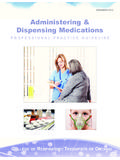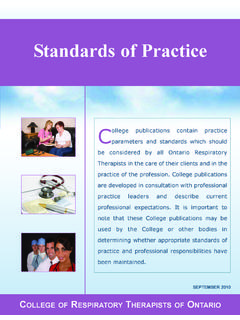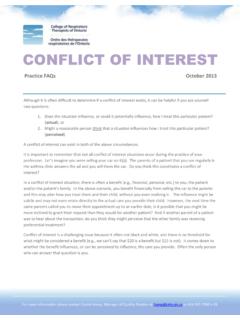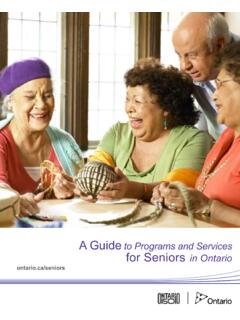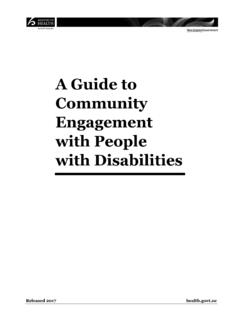Transcription of Oxygen Therapy - CRTO
1 COLLEGE OFRESPIRATORYTHERAPISTS OFONTARIONOVEMBER2013C L I N I C A L B E S T P R A C T I C E G U I D E L I N EOxygen TherapyPage | 2 Oxygen Therapy Clinical Best Practice GuidelineAcknowledgementsThis College of Respiratory Therapists of Ontario (CRTO or the College ) Clinical Best Practice Guideline(CBPG) was developed by the Professional Practice Committee (PPC) of the CRTO in consultation withCouncil and other committees of the College, Members at large and PPC is a non-statutory committee comprised of Registered Respiratory Therapists (RRT) and publicmembers with a wide range of knowledge and experience from various practice areas across Ontario. Thiscommittee was formed by the CRTO in 2010 to focus specifically on the review and development ofstandards of practice directly related to the practice of Respiratory Therapy in Ontario. By having astanding committee of Respiratory Therapy leaders and experts from core areas of practice, and theability to draw on additional expertise where necessary, the CRTO aims to ensure consistency in thereview and development of publications in a timely fashion.
2 The CRTO would like to acknowledge thework of the PPC, Members at large, and staff in the development of this new Practice Committee MembersPaul Williams RRT Chair (CRTO Council Academic Member)Renee Pageau RRT Vice Chair (CRTO Non-Council Member)Carol-Ann Whalen RRT (CRTO Non-Council Member)Allan Cobb (CRTO Public Council Member)Rhonda Contant RRT (CRTO Council Member)Daniel Fryer RRT (CRTO Non-Council Member)Alean Jackman RRT(CRTO Non-Council Member)Lori Peppler-Beechey RRT (CRTO Non-Council Member)Bruno Tassonse RRT (CRTO Non-Council Member)ConsultantsRaymond Janisse RRT Certified Hyperbaric Technologist (CHT)Bill Boyle, RRT (Certified Hyperbaric Technologist), MPA, CHEPast Professional Practice Committee Members (2010-2012)Marisa Ammerata RRT - Vice Chair (CRTO Council member)Jim Ferrie (CRTO Public Council Member)Ally Ruzycki-Chadwick RRT (CRTO Non-Council Member)Sherri Horner RRT (CRTO Member at large)Kevin Middleton RRT (CRTO Member at large)Carole LeBlanc RRT Vice Chair (CRTO Non-Council Member)Dave Jones RRT (CRTO Council Member)Tracy Bradley RRT (CRTO Council Member)Mark Pioro (CRTO public Council Member)Resources and references are hyperlinked to the Internet for convenience and referenced to encourageexploration of information related to individual areas of practice and/or interests.
3 Bolded terms aredefined in the Published: November 2013 Oxygen Therapy Clinical Best Practice GuidelinePage | 3 Introduction 5 Professional Practice Assumptions 5 Guiding Principles 6 Accountability 7 Conflicts of Interest
4 8 The Scope of this Clinical Best Practice Guideline 9 Evidence Based Practice 9 Oxygen - A Brief Review 10 Fast Facts about Oxygen 10 Overview: Types of Oxygen Delivery Systems 11 Compressed Gas Cylinders 12 Liquid Oxygen in Cryogenic Containers 14 Oxygen Concentrators for Medical Use 15 Oxygen Safety at Home 16 Oxygen Therapy 17 health Canada & the Food and Drug Act
5 17 An overview of the Phases of Drug Action 18 Indications for Oxygen Therapy 19 Absolute Contraindications & Potential Adverse Effects 20 Goals of Oxygen Therapy 21 Hypoxia 21 Hypoxemia 22 The Effects of Hypoxia & Hypoxemia 23 Drive to Breathe and Carbon Dioxide Retention 24 How does Oxygen Therapy work?
6 25 Oxygen Transport 25 Oxhemoglobin Dissociation Curve 26 Gas Exchange (of Oxygen ) 27 Normal Diffusion of Oxygen 28 Pathophysiological Factors Affecting Gas Exchange 29table of contentsOxygen Therapy Equipment and Adjuncts 30 Guiding Principles 31 Oxygen Delivery at the Patient/Client Interface 32
7 Low Flow Oxygen Delivery Devices 33 High Flow Oxygen Delivery Devices 33 Nasal High Flow Oxygen Therapy 33 Oxygen Therapy and Humidity 34 Low Flow Oxygen Humidifiers 34 High Flow Oxygen Humidifiers 34 Special Considerations 35 Neonatal care 35 Hyperbaric Oxygen Therapy 36 Physiological Effects of Hyperbaric Oxygen Therapy 37 Major Complications of Hyperbaric Oxygen Therapy 38 Oxygen at High Altitudes
8 39 Assessment of Oxygen Therapy 40 Oximetry 40 Pulse Oximetry 40 Key Points to Remember 41 Glossary 42 References 43table of contentsPage | 4 Oxygen Therapy Clinical Best Practice GuidelineIntroductionProfessional Practice AssumptionsIt is expected that all Respiratory Therapists (RTs) in Ontario possess the entry to practicecompetencies ( , knowledge, skills and judgment/abilities) to make sound clinical decisions regardingadministration of Oxygen (O2) Therapy as part of their education and clinical experience.
9 In addition,the College assumes that all Members: Possess a specialized body of knowledge ( , about Oxygen Therapy ); Are committed to maintaining a high standard of professional practice through self-governance; Are committed to lifelong learning and the development of knowledge, skills and abilitiesthroughout their career; Are committed to ongoing professional development; Are committed to the principle of accountability in their professional practice; and Are committed to practicing in an ethical addition, Members are expected to act only within their professional scope of practice and in thebest interest of their patients/clients. Please refer to the Standards of Practiceand the CRTO s positionstatement Scope of Practice and Maintenance of purposes of this CBPG are to: Provide a framework for Respiratory Therapists to make informed patient care decisions aboutoxygen Therapy that are safe and ethical; Provide a framework for clinical best practices regarding Oxygen Therapy that are current,evidence based and linked to up-to-date resources and learning materials; Support Respiratory Therapists in the maintenance of competency, support ongoingprofessional development and quality practice.
10 And Provide the public and other health care professionals with confidence that RespiratoryTherapists are safe and ethical regulated health care professionals with the expertise toadminister Oxygen Therapy that results in positive health care outcomes for the public Therapy Clinical Best Practice GuidelinePage | 5 Guiding PrinciplesTherapeutic Oxygen should only be administered by competent healthcare providerswho possess the required competencies (knowledge, skill, and judgment/abilities) tomake clinical decisions regarding the administration of Oxygen . The administration ofsubstances by inhalation is a controlled act under the Regulated health Professions Act(RHPA) and is authorized under the Respiratory Therapy Act (RTA). The practice ofadministering Oxygen Therapy clearly falls within the legislated scope of practice ofRespiratory Therapy , which is: Oxygen Therapy is an expected competency of all Respiratory Therapists regardless ofthe practice setting.
